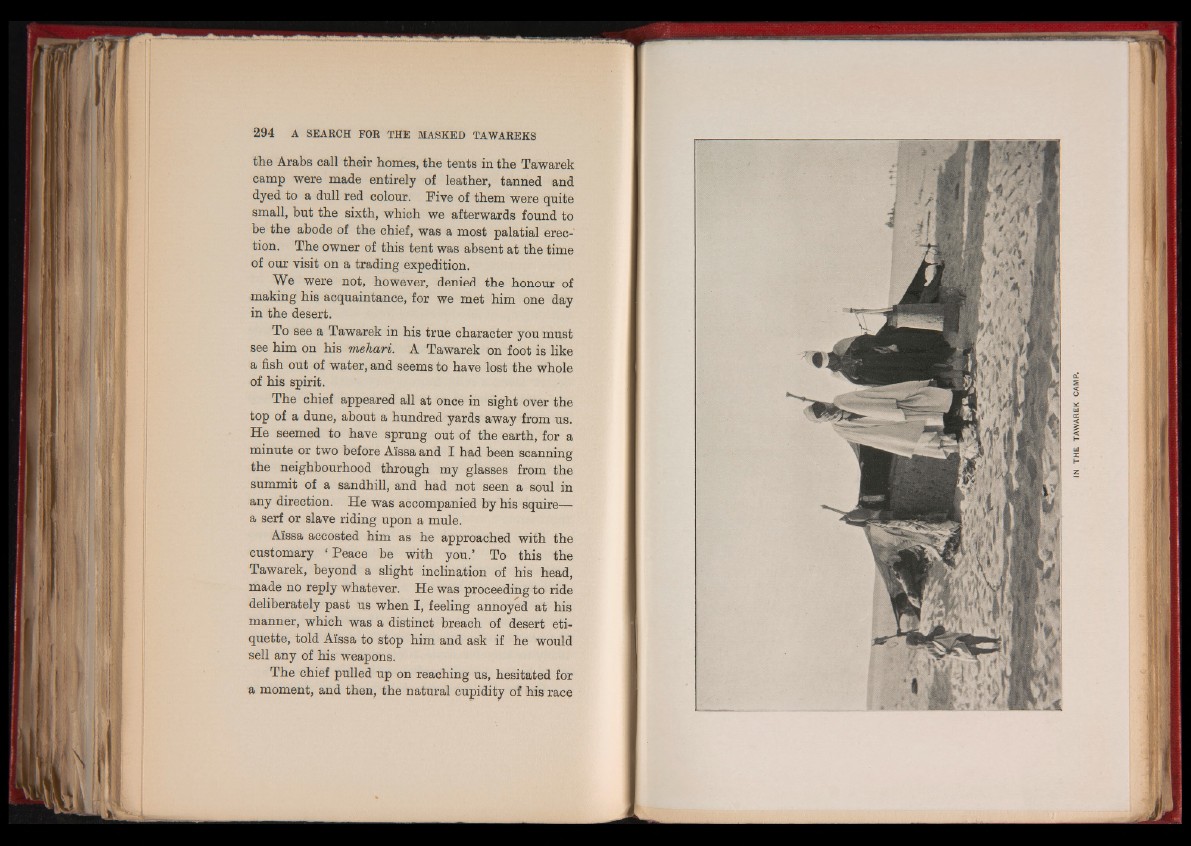
the Arabs call their homes, the tents in the Tawarek
camp were made entirely of leather, tanned and
dyed to a dull red colour. Five of them were quite
small, but the sixth, which we afterwards found to
be the abode of the chief, was a most palatial erection.
The owner of this tent was absent at the time
of our visit on a trading expedition.
We were not, however, denied the honour of
making his acquaintance, for we met him one day
in the desert.
To see a Tawarek in his true character you must
see him on his méhari. A Tawarek on foot is like
a fish out of water, and seems to have lost the whole
of his spirit.
The chief appeared all at once in sight over the
top of a dime, about a hundred yards away from us.
He seemed to have sprung out of the earth, for a
minute or two before Aïssa and I had been scanning
the neighbourhood through my glasses from the
summit of a sandhill, and had not seen a soul in
any direction. He was accompanied by his squire—
a serf or slave riding upon a mule.
Aïssa accosted him as he approached with the
customary ‘Peace be with you.’ To this the
Tawarek, beyond a slight inclination of his head,
made no reply whatever. He was proceeding to ride
deliberately past us when I, feeling annoyed at his
manner, which was a distinct breach of desert etiquette,
told Aïssa to stop him and ask if he would
sell any of his weapons.
The chief pulled up on reaching us, hesitated for
a moment, and then, the natural cupidity of his race